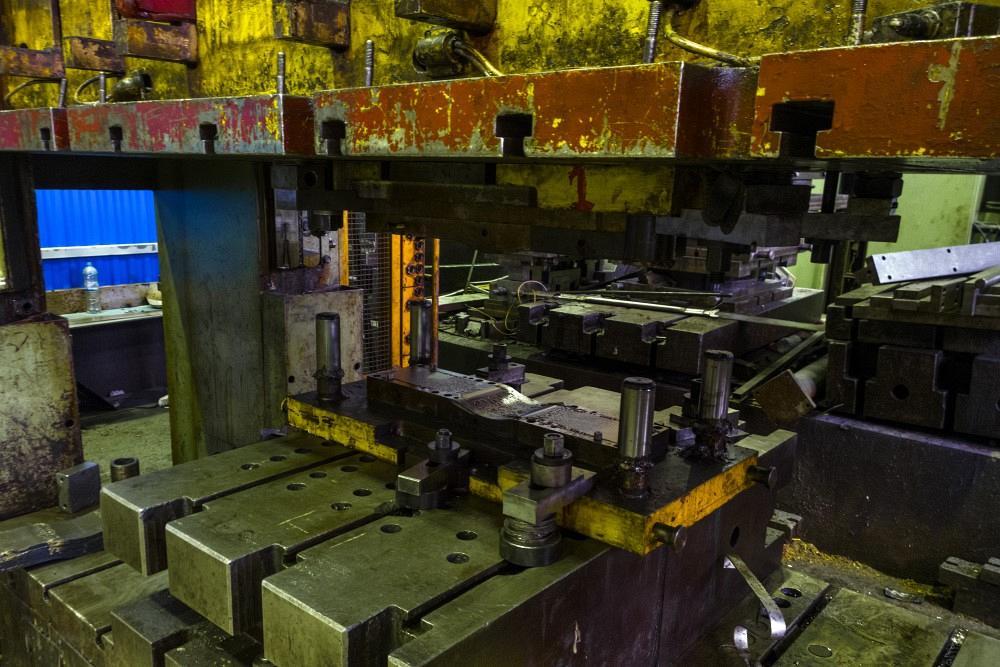Contributing Writer
- FMA
- The Fabricator
- FABTECH
- Canadian Metalworking
Categories
- Additive Manufacturing
- Aluminum Welding
- Arc Welding
- Assembly and Joining
- Automation and Robotics
- Bending and Forming
- Consumables
- Cutting and Weld Prep
- Electric Vehicles
- En Español
- Finishing
- Hydroforming
- Laser Cutting
- Laser Welding
- Machining
- Manufacturing Software
- Materials Handling
- Metals/Materials
- Oxyfuel Cutting
- Plasma Cutting
- Power Tools
- Punching and Other Holemaking
- Roll Forming
- Safety
- Sawing
- Shearing
- Shop Management
- Testing and Measuring
- Tube and Pipe Fabrication
- Tube and Pipe Production
- Waterjet Cutting
Industry Directory
Webcasts
Podcasts
FAB 40
Advertise
Subscribe
Account Login
Search
Die Science: Finding the root cause of stamping failures
Hint: It’s probably not the die’s fault; here are three key variables
- By Art Hedrick
- December 24, 2020
- Article
- Bending and Forming

Of the many process variables that interact to cause stamping failures, there three that stand out. Getty Images
“I just don't understand why we can't put this die in the press and make satisfactory parts without spending hours adjusting it. We paid good money for this die! They must have done something wrong when they designed or built it; otherwise we would be able to set it up and run it without making adjustments.”
Sound familiar? If you work in a sheet metal stamping operation or in a die building shop, you probably hear this frequently. Yes, die design is critical, but it’s only one element essential for manufacturing quality stamped parts. Variables such as the material’s mechanical properties, press speed and accuracy, lubricant type and application method, tool temperature, drawing ratio, punch and blank shape, holding pressure, and number of stations all play a part. Discovering how all process variables interact can help you find the root cause of typical stamping failures.
Failure 1: Parts Are Not Flat
When the material coming into the die isn’t flat, the pressure pads holding it down and securing it may not have enough force to hold it flat during cutting and forming operations. This often results in excessive cutting burrs, bending in improper locations, and nonconforming geometries.
When part flatness is lost, stampers often focus on the die. Tool- and diemakers shim stations and grind stations to try to “reflatten” the problem area. But dies can only slightly improve the flatness of the incoming sheet. They can be designed and engineered to retain sheet flatness, but it’s nearly impossible for the die to make a flat part out of incoming material—especially if the material has a very high tensile strength or is very thin.
In most of these cases, the problem is not the die, but the coil feeding and straightening equipment. The flatness and straightness of the incoming coil is a product of the straightener and leveler. Because the coil is wound tighter on the inside diameter than on the outside diameter, adjustments often need to be made to the coil feeder and straightener to compensate for coil set.
Failure 2: Parts Are Splitting or Wrinkling
Too much wrinkling can cause splitting in a stamping operation. For example, if the metal is allowed to wrinkle in the blank holder or draw pad area, it will be forced to unwrinkle before flowing into the draw die cavity. This will likely result in restricted metal flow, which in turn causes excessive stretching, thinning, and necking. Similarly, if the metal is allowed to wrinkle before flowing over a draw bead, the resulting restrictive force can cause excessive thinning or splitting. The diemaker must prevent wrinkling to stop the splitting by increasing blank holder force, adjusting the standoffs or equalizers, or changing the blank shape and/or size.
Conversely, splitting can result in wrinkling. If the metal is being overstretched and splits, sheet tension will decrease, allowing the sheet to wrinkle. It’s much like poking a finger into a piece of plastic wrap: Once your finger pushes the wrap, it wrinkles. To eliminate splitting, the diemaker can try decreasing holding forces, changing or adding lubricant, polishing the tool, or making changes in the blank shape or geometry.
Failure 3: Part Features Are Not in the Right Location
If the pitch or progression on a progressive die is not set up correctly or the pilot release is not properly calibrated, the die will not be able to locate and register the parts correctly in their respective stations. This will result in holes being pierced out of location and other features formed out of location.
An inexperienced diemaker may attempt to move the holes physically or make changes in the cutting or forming die geometry when the real problem lies with the timing of the feed release. For the die to register the strip properly within the tool, the feed release must let go of the material.
The Interactivity Maze
These are only a few examples of the interactivity that happens within a stamping process. Literally thousands of variables affect the stamping process, and a solution to a problem might involve a combination of several working together.
To find the root cause of stamping failure, you need to understand these variables and how they interact and take a systematic, data-based approach to the problem. Defect prevention is much better than defect correction.
About the Author

Art Hedrick
10855 Simpson Drive West Private
Greenville, MI 48838
616-894-6855
Related Companies
subscribe now

The Fabricator is North America's leading magazine for the metal forming and fabricating industry. The magazine delivers the news, technical articles, and case histories that enable fabricators to do their jobs more efficiently. The Fabricator has served the industry since 1970.
start your free subscription- Stay connected from anywhere

Easily access valuable industry resources now with full access to the digital edition of The Fabricator.

Easily access valuable industry resources now with full access to the digital edition of The Welder.

Easily access valuable industry resources now with full access to the digital edition of The Tube and Pipe Journal.
- Podcasting
- Podcast:
- The Fabricator Podcast
- Published:
- 04/16/2024
- Running Time:
- 63:29
In this episode of The Fabricator Podcast, Caleb Chamberlain, co-founder and CEO of OSH Cut, discusses his company’s...
- Industry Events
16th Annual Safety Conference
- April 30 - May 1, 2024
- Elgin,
Pipe and Tube Conference
- May 21 - 22, 2024
- Omaha, NE
World-Class Roll Forming Workshop
- June 5 - 6, 2024
- Louisville, KY
Advanced Laser Application Workshop
- June 25 - 27, 2024
- Novi, MI
































